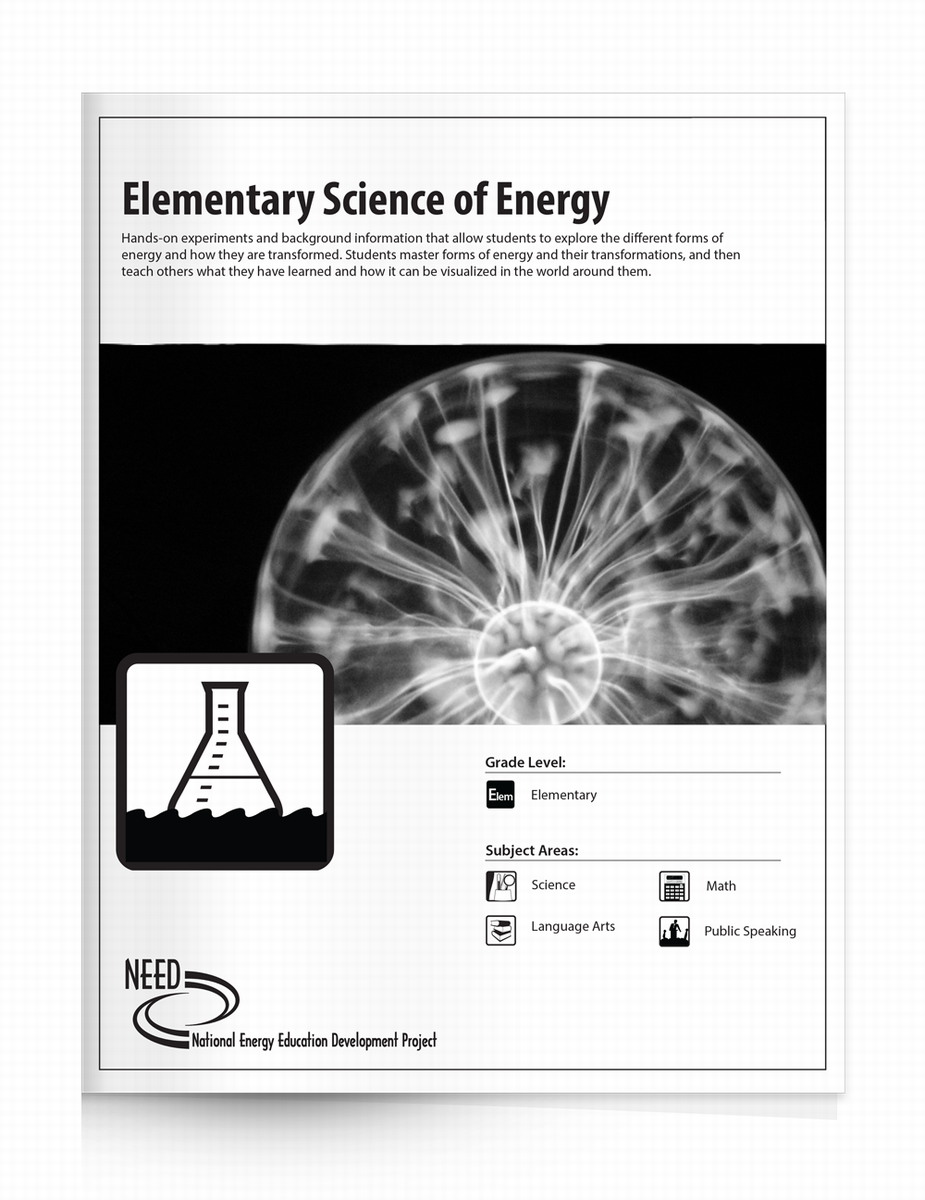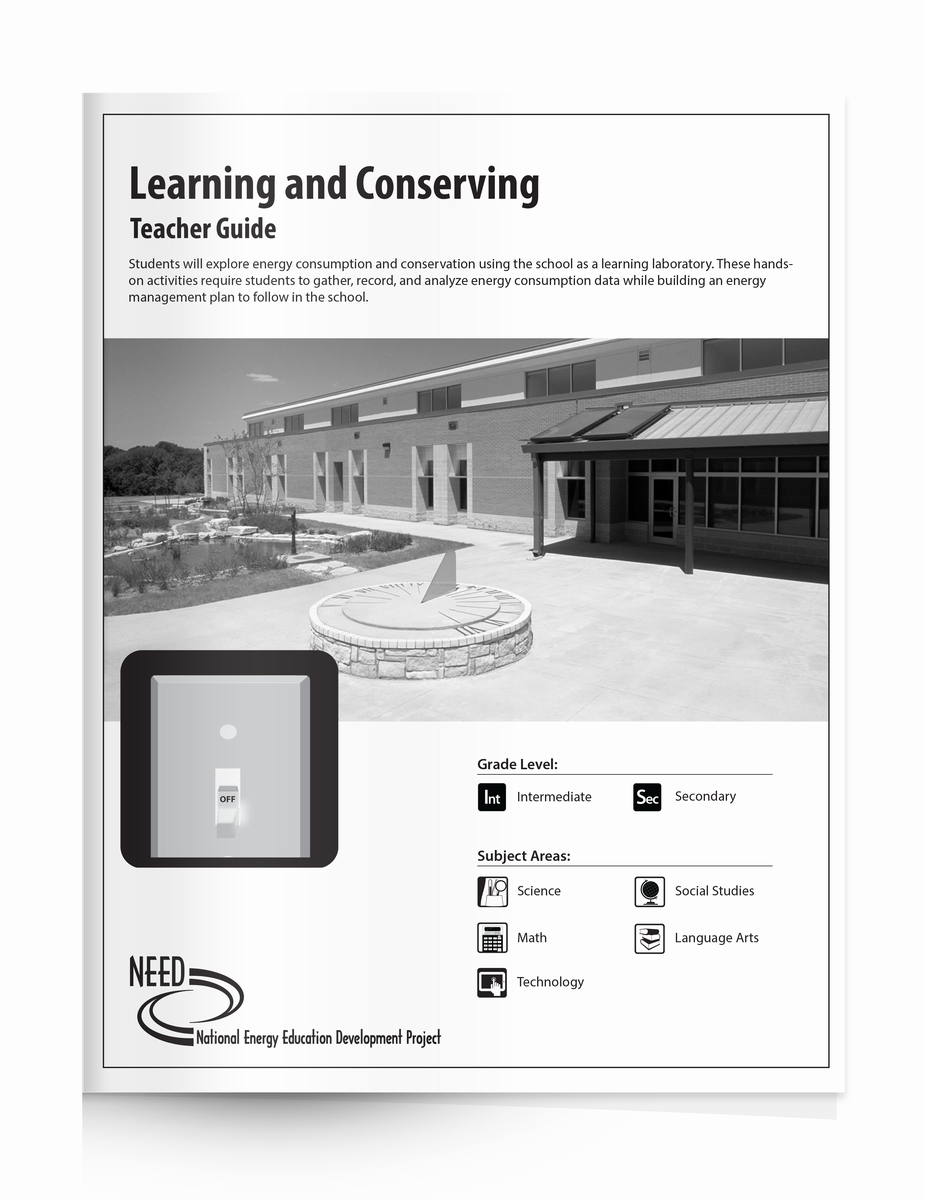In 2007, Congress passed the Energy Independence and Security Act, which among other things phased out the manufacture of most standard incandescent light bulbs. Traditional incandescent bulbs are very inefficient, converting only about one-tenth of the energy they use to light, emitting the other 90% as wasted thermal energy. One replacement for these bulbs is a halogen incandescent bulb, which has a glass capsule containing an inert gas around the filament, designed to reduce the amount of electricity needed to emit the same intensity of light. These new, more efficient incandescent bulbs use about one-fourth less electricity to produce the same amount of light as those old, phased out incandescent bulbs. However, this simple change does alter the wavelengths of the light being produced.
Who would have thought that increasing our energy efficiency as a society would lead to frustrating difficulty in the science classroom? If you’ve been using NEED curriculum or kits with photovoltaic (PV) panels you may have come across something we have recently discovered for ourselves – the halogen incandescent bulbs do not produce the desired wavelengths of light to allow classroom solar panels to operate correctly. CFLs and LEDs may not work either, and certainly don’t emit enough heat to do some classroom thermal energy activities. In fact, a NEED staff member may or may not have made repeated trips to home improvement stores and may or may not now have a lifetime supply of various styles light bulbs that produce 625-1600 lumens in her home right now. And we can neither confirm nor deny reports that this same NEED staff member was seen darting up and down the lighting aisles of these same stores with a solar panel attached to a small motor and fan blade.
In all seriousness, it can be very frustrating when one very good policy designed to improve air quality and energy consumption leads to unanticipated problems with teaching in the classroom. So, what is one to do if they haven’t hoarded old 60-watt incandescents? What bulbs can be used to demonstrate PV panels in the classroom when sunlight isn’t an option? Never fear, NEED thinks we have come up with a solution for those of you experiencing this exasperating situation. We will outline what we found to be the best current strategy for using light bulbs with our kits.
Science of Energy – All of the materials in this kit will respond to the newer, efficient, halogen incandescent bulbs. Because the filament inside this bulb still produces light by getting so hot it glows, the thermometer and radiometer portions of Station 3 will still function as they always have. The radiometer might not spin quite as rapidly but it will still work well. The PV panel included in our kits will respond to halogen incandescent lights, but you will need to hold the panel much closer to the bulb than was needed with traditional incandescent bulbs. Our best recommendation for use with Science of Energy is a halogen incandescent bulb that produces around 1,000 lumens. This size bulb should still fall beneath the watt limitation of most light fixtures you might use, but you need to pay attention to the specific rating of your equipment to make sure you don’t exceed circuitry limitations or cause overheating.
might not spin quite as rapidly but it will still work well. The PV panel included in our kits will respond to halogen incandescent lights, but you will need to hold the panel much closer to the bulb than was needed with traditional incandescent bulbs. Our best recommendation for use with Science of Energy is a halogen incandescent bulb that produces around 1,000 lumens. This size bulb should still fall beneath the watt limitation of most light fixtures you might use, but you need to pay attention to the specific rating of your equipment to make sure you don’t exceed circuitry limitations or cause overheating.
Another option that might yet exist in many schools is to use an overhead projector as the source of light at Station 3. If your school has phased them out, or is in the process of doing so, talk to your technology department or administrative personnel to request keeping one or more of these projectors on-hand, either in your storage room or somewhere safe in school, to use for these activities. Students of course must be very careful with the light coming out of the projection portion of these devices (the lenses at the top) as the light here is being focused into a smaller beam and thus more condensed, leading to a higher energy density than is coming out of the flat surface where transparencies are placed.

Monitoring & Mentoring, Learning & Conserving, Saving Energy at Home and at School – The activities in these curriculum units use light bulbs to compare their output and energy use. Therefore, any combination of light bulbs will be functional for this purpose. We recommend comparing the newer, efficient halogen incandescent light bulbs to something like a compact fluorescent light (CFL) or a light-emitting diode bulb (LED). Have your students evaluate the true efficiency of the newer technology using the Kill-a-Watt™ meters.
The Sun and its Energy, Wonders of the Sun, Energy from the Sun – Primary, Elementary, and Intermediate classrooms are going to need to consider two factors when choosing light bulbs for classroom use with NEED kits. First, you will need a bulb that releases enough thermal energy to make the thermometer, radiometer, and radiation can activities functional. Second, you will need a bulb that releases the right wavelengths of light to make the solar panels functional. In this case, it might be better to have two different light bulbs for these units. We suggest using a halogen incandescent bulb for the activities that require a heat source. When it comes to the PV panels, however, you might get frustrated having to hold the panel essentially right up to the bulb and perhaps, another option would be better.
We found an LED bulb that produces the necessary wavelengths of light for photovoltaics to work at distances farther than one centimeter away from the bulb. It is a 16 Watt, 1600 lumen, warm white LED bulb. The two most important factors are that it is a “warm white” light quality/temperature, and that it is more than 1,000 lumens, (and the higher the better). The radiometer does spin when exposed to this light, but not nearly as fast as with the incandescent or halogen incandescent bulbs. And, the radiation can activities where light is concentrated and focused on black or shiny cans will take a long, long time to result in any measureable increase in temperature.
Exploring Photovoltaics – The materials in this NEED kit are manufactured to tighter specifications and therefore are more sensitive about the light source used with them. All of the activities in Exploring Photovoltaics have students wire a load into the circuit with the solar panel. The light emitted by a halogen incandescent was not capable of producing enough power in the solar cell used in this kit to power any load at all, even if the panel is touching the light bulb. A digital multimeter did record a small output but it was such low power that it couldn’t do anything useful. If you’re using this kit in your classroom, you’re going to be limited to one light bulb type – the warm white, 16 W, 1600 lumen LED bulb.
It is important to note that bright white LED bulbs did not produce the right wavelength(s) of light for Exploring Photovoltaics panels to function, so the warm white designation is very important if you don’t want to make several trips back and forth to the store (“Ain’t nobody got time for that!”).
You may also find that the load wired into the circuit needs to be altered. Currently, the photovoltaic classroom boxed set that is included in the Exploring Photovoltaics kit includes a small light bulb and a music box/buzzer, along with a motor and fan blade. If you are unable to produce enough power to operate the light bulb or the fan, substitute the buzzer, and bring a set of earplugs to class; having six groups all using this buzzer can be very hard on the ears! Your students, however, will find it highly amusing to hear the changes in the buzzer output as the power output of the solar panel changes.
Finally, remember that all of the activities listed in all of our curriculum units that use radiant energy work very well in direct natural sunlight, even in winter. If you have windows in your classroom, or are able to take your students outside, this is a great option. Keep in mind, though, that the distance from source activities (Solar 5 in Exploring Photovoltaics, for example) won’t show the desired result if the sun is your light source. The intensity of light reaching the ground vs. the intensity of sunlight reaching your head while standing, for example, is essentially the same because six feet as a percentage of 92 million miles is very, very small. Kids will do this – hold the solar panel over their heads to see if it changes. We suggest you allow them to do so and then ask them why it didn’t change. Younger students might need some scaffolding to reach the correct conclusion.
As always, if you have difficulty getting a component in your NEED kit to operate, do not hesitate to call or email us at any time. Make sure to take the opportunity to discuss the challenges with new bulbs as a class. Efficiency is a major factor in bulb choice, but function is important in some cases, too. For this reason, some incandescent bulbs used for industrial and commercial applications may never disappear. And hey, if you’re getting kids to switch out their old bulbs at home, that means they’re learning about efficiency, and that is awesome! Perhaps, though, you could convince them to donate those old incandescent bulbs to science (extra credit optional).
